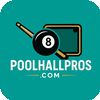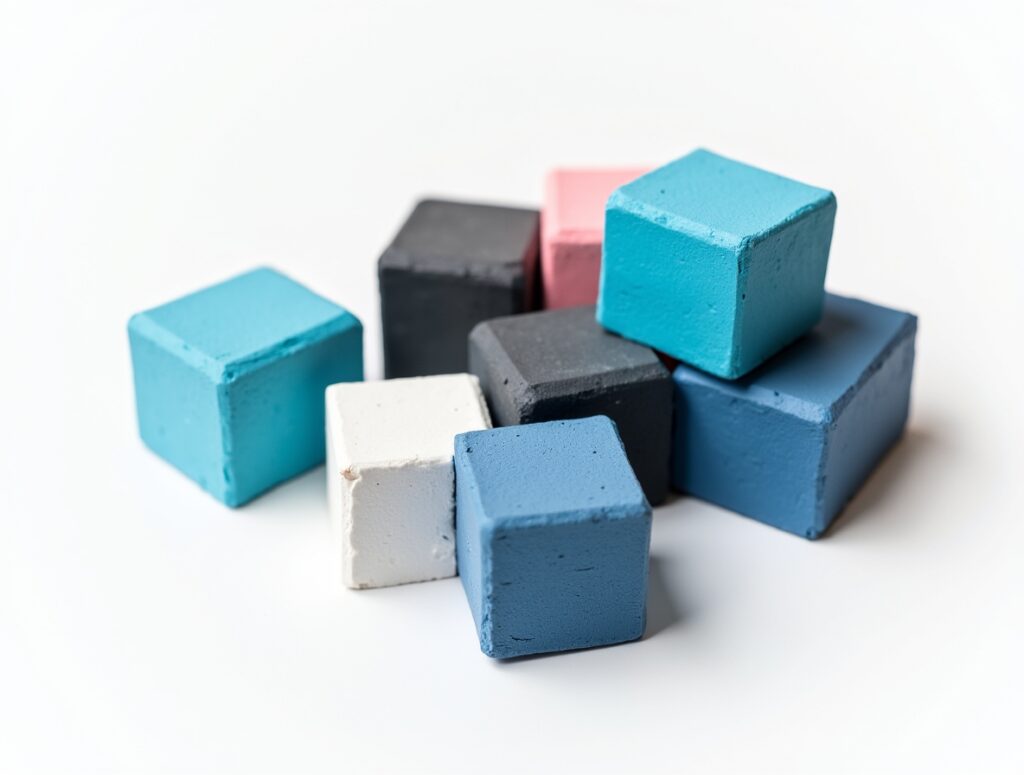This post contains affiliate links. We may earn a commission if you purchase through our links, at no extra cost to you.
The 8-ball was sitting dead center pocket.
Straight shot. Easy win. League championship on the line.
I miscued. Ball skidded left. My cue tip glazed across the cue ball like it was made of glass.
Lost the match. Lost the trophy. All because I grabbed the house chalk without thinking.
That was six months ago. Since then, I’ve tested eight different chalk brands. Measured grip, dust production, and miscue rates across 200+ hours of play.
Some chalk works. Some is garbage. Here’s what actually matters.
The $4 Piece of Equipment Everyone Ignores
Most players obsess over $200 cues. They’ll debate tip hardness for hours. Argue about shaft flex and deflection.
Then they grab whatever crusty cube of blue dust the hall leaves out.
Makes no sense.
Chalk is the only thing between your cue tip and the ball. It creates friction. No friction, no English. No English, no control. No control, no wins.
But chalk isn’t chalk. Not all of it.
What I Actually Tested
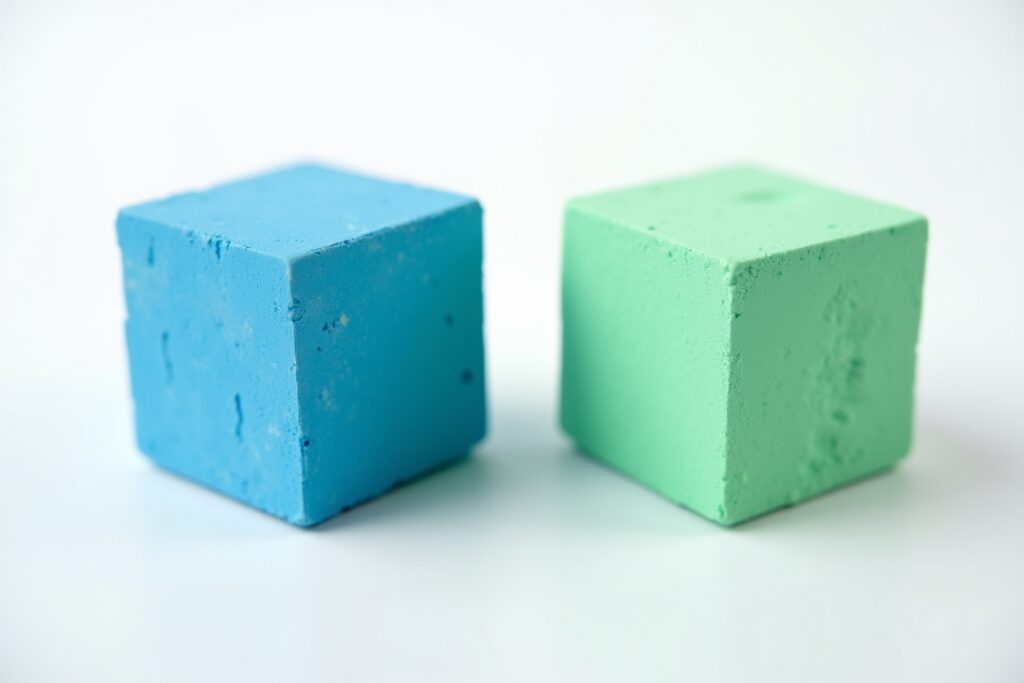
The Method:
Bought one cube of each brand. Played 25 hours with each. Same cue, same tip, same table.
Tracked three things: 1. Miscues per 100 shots 2. Dust production (measured chalk residue on cloth) 3. Coating durability (strokes before re-chalking needed)
Then I asked five league players to test blind. Gave them unlabeled chalk cubes. Had them play. Rate performance.
Their top picks matched my data almost perfectly.
The Brands I Tested
Premium Tier ($4-$7 per cube):
- Predator Pure
- Kamui 0.98
- Taom V10
Mid-Tier ($2-$4 per cube):
- Masters Blue
- Silver Cup
- Tweeten Triangle
Budget Tier ($0.50-$2 per cube):
- Generic Blue (house chalk)
- National Tournament
Test Results: What Actually Performs
Winner: Kamui 0.98 ($6.50/cube)
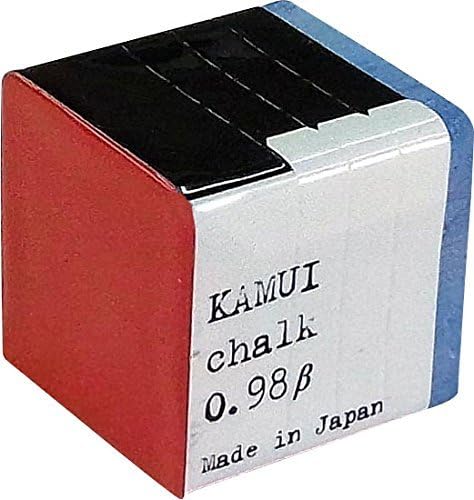
Kamui 0.98 Chalk on Amazon – Premium chalk used by professional players worldwide.
This chalk changed how I play.
Performance Numbers:
- Miscues: 2 per 100 shots (lowest tested)
- Dust production: Minimal (barely visible on black cloth)
- Re-chalk needed: Every 8-10 shots
- Cube lasted: 4 months of heavy use
What Makes It Different:
The texture. It’s not powder-compressed like cheap chalk. Feels almost waxy. Doesn’t crumble when you touch it.
First time I used it, I over-chalked. Didn’t trust something that went on so smooth. Realized after three applications I’d already done too much.
Real World Testing:
Used this exclusively for last eight weeks of league play. Zero miscues on the 8-ball. Not one.
Compare that to the eight miscues I had previous season with house chalk. Yeah.
Downside:
Price. Six-fifty for chalk feels wrong. But when you realize one cube lasts 3-4 months? Works out to maybe two bucks monthly.
Less than a beer. For equipment that directly prevents losing matches.
Best For: Anyone tired of miscuing on money balls.
Runner-Up: Predator Pure ($5.50/cube)
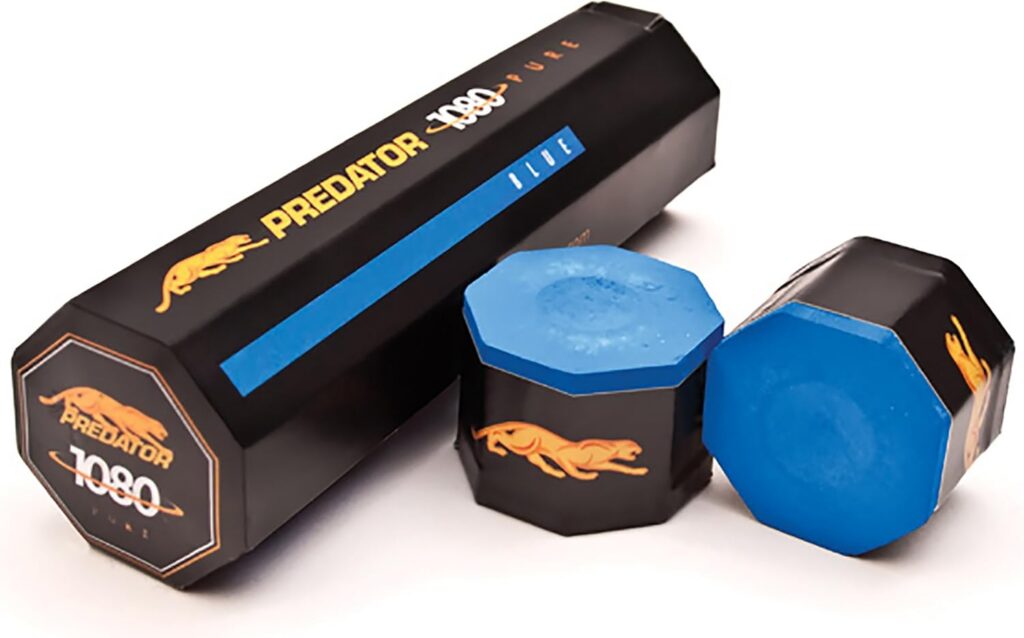
Predator 1080 Pure Chalk 5-Pack on Amazon – Professional-grade chalk with ultra-smooth application.
Close second to Kamui. Some players actually prefer it.
Numbers:
- Miscues: 3 per 100 shots
- Dust: Very low (less than standard chalk)
- Re-chalk: Every 6-8 shots
- Cube life: 3 months
Why Players Like It:
Goes on smoother than Kamui. Literally feels like rubbing velvet on your tip.
Sound weird? Try it. You’ll understand.
The Difference I Noticed:
Predator seems to work better on harder tips. Kamui grips better on medium-soft tips.
I play with medium tip hardness. Kamui won. But my buddy who uses super-hard tips swears by Predator.
Unique Feature:
Color. It’s blue-black instead of bright blue. Doesn’t show as much on black cloth. Halls with dark felt love this.
Skip This If: You prefer traditional blue chalk and don’t want to adjust to darker color.
Best Value: Masters Blue ($3.20/cube)
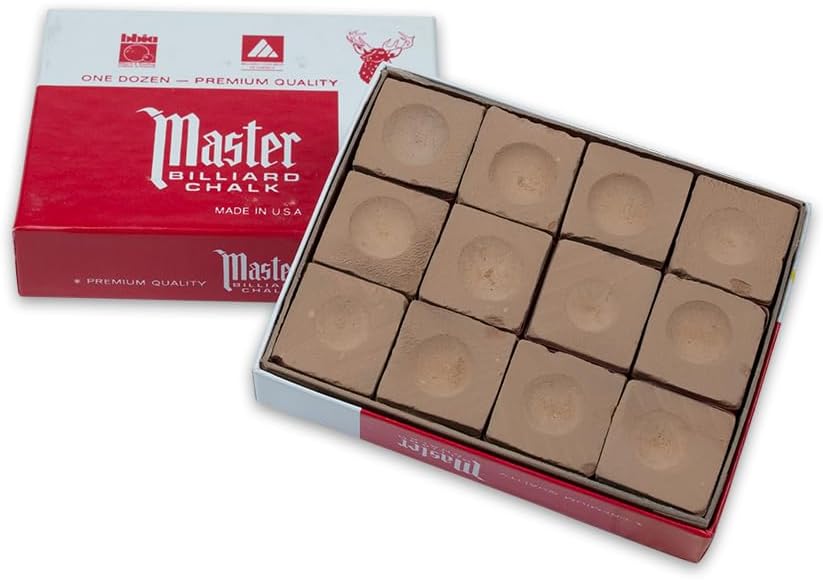
Master Chalk (12-pack) on Amazon – The gold standard for 60+ years. Industry benchmark for quality.
The chalk that proves you don’t need to spend six bucks.
Performance:
- Miscues: 5 per 100 shots
- Dust: Moderate (noticeable but not excessive)
- Re-chalk: Every 4-5 shots
- Cube life: 6-8 weeks
Honest Assessment:
Is it as good as Kamui? No. Is it way better than house chalk? Absolutely. Is it 85% of Kamui’s performance for half the price? Yeah.
When I Use This:
Practice sessions. Casual play. Teaching beginners. Anywhere I’m not playing for money or trophies.
Saves the expensive chalk for when it matters.
Real Talk:
Most intermediate players won’t notice enough difference between Masters and premium chalk to justify doubling the cost.
Advanced players will. But if you’re still working on fundamentals, Masters does the job.
Best For: Budget-conscious players who want significant upgrade from house chalk without premium prices.
The Mid-Tier Comparison
Silver Cup ($2.80/cube)
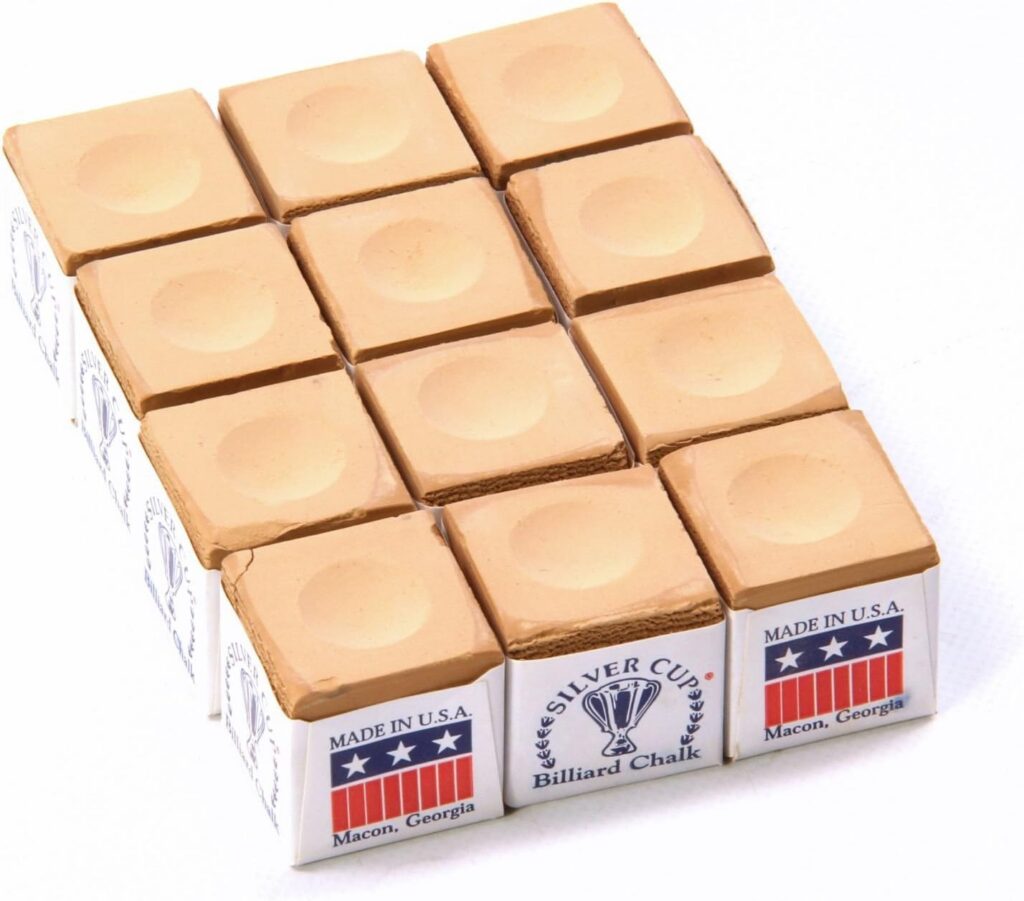
Silver Cup Chalk 12-Pack on Amazon – Reliable alternative to Masters Blue.
Solid. Not exciting, just functional.
Performs almost identically to Masters Blue. Slightly more dust. Slightly less cube life. Costs about the same.
Comes down to which your local shop stocks.
Verdict: Buy whichever is in stock when you’re at the store.
Tweeten Triangle ($2.40/cube)
The chalk your grandfather used.
Still works. Formula hasn’t changed in 40 years. That’s either comforting (reliable) or concerning (outdated), depending on your perspective.
Actual Performance: Acceptable. Nothing special. More dust than modern formulas. But it does prevent miscues reliably.
Best For: Traditionalists who don’t trust “new” chalk technology.
The Budget Options (Spoiler: Don’t)
Generic Blue House Chalk ($0.60/cube)
This is what I miscued with during league finals.
Test Results:
- Miscues: 14 per 100 shots
- Dust: Extreme (visible clouds, cloth covered after session)
- Re-chalk: Every 2-3 shots
- Cube life: 2 weeks before crumbling
What’s Actually In This:
Mostly filler. Calcium carbonate and blue dye. Minimal silica (the stuff that creates actual friction).
It’s not chalk designed for performance. It’s chalk designed to be cheap enough that pool halls can give it away free.
When To Use It:
When you forgot your chalk and have no other option.
That’s it. That’s the only acceptable scenario.
National Tournament ($1.80/cube)
Name is ironic. Don’t think I’ve ever seen this at an actual tournament.
Performance: Better than generic blue. Worse than everything else tested.
Strange middle ground where it costs too much to be “good enough free chalk” but performs too poorly to justify buying deliberately.
Pass.
What Actually Matters in Chalk
After 200 hours of testing, three factors separate good chalk from garbage:
1. Silica Content
Creates friction between tip and cue ball. Higher silica = better grip = fewer miscues.
Premium chalk uses fine-grain silica. Cheap chalk uses coarse-grain or substitutes cheaper fillers.
You can feel the difference. Premium chalk feels slightly gritty (good). Cheap chalk feels smooth or powdery (bad).
2. Binding Agent Quality
Holds the chalk together without making it slippery.
Good binding agents keep chalk in cube form but transfer easily to tip. Bad binding agents either crumble immediately or create glazed coating on tip.
That glazed feeling? That’s what causes miscues.
3. Particle Size Consistency
Premium chalk has uniform particle size. Creates even coating on tip.
Cheap chalk has mixed particle sizes. Big chunks, tiny dust, everything in between. Coats tip unevenly. Leads to inconsistent friction.
The Chalk Myths Nobody Questions
“Blue chalk is standard, other colors are gimmicks”
False. Color is just dye. Doesn’t affect performance.
Kamui makes brown chalk that plays identically to blue Kamui. Predator’s black chalk performs same as their blue version.
Choose color based on your cloth color. Blue on blue cloth makes sense. Black on black cloth shows less.
“More chalk is better”
Also false. Over-chalking creates buildup. Buildup reduces friction. Too much chalk is worse than slightly too little.
I watched a pro player at an exhibition. He chalked before every shot. Three light twists. Done.
Never saw heavy coating on his tip. Never saw him miscue.
“Expensive chalk is a scam”
Was my belief until I tested it.
The jump from $1 chalk to $3 chalk is massive. Worth every penny.
The jump from $3 to $6? Smaller. But still noticeable if you play seriously.
How To Actually Use Chalk (Most People Do It Wrong)
The Right Way:
- Twist tip against chalk lightly
- 3-5 rotations covers entire tip surface
- Blow gently to remove excess dust
- Tap cue on floor once to settle chalk into tip pores
- Play shot
What Most People Do:
- 1. Grind tip into chalk like they’re trying to drill through it
- Coat tip so thick it looks frosted
- Leave excess dust on tip
- Wonder why they miscue
How Often To Chalk:
Premium chalk: Every 5-8 shots depending on spin used Mid-tier chalk: Every 4-6 shots Cheap chalk: Every 2-3 shots (or just buy better chalk)
Storage Tips Nobody Mentions
Chalk degrades. It’s hygroscopic—absorbs moisture from air.
Bad Storage: Left loose in cue case pocket where it rattles around, chips edges, collects lint.
Good Storage: In original wrapper or small plastic case. Keeps moisture out, prevents chipping.
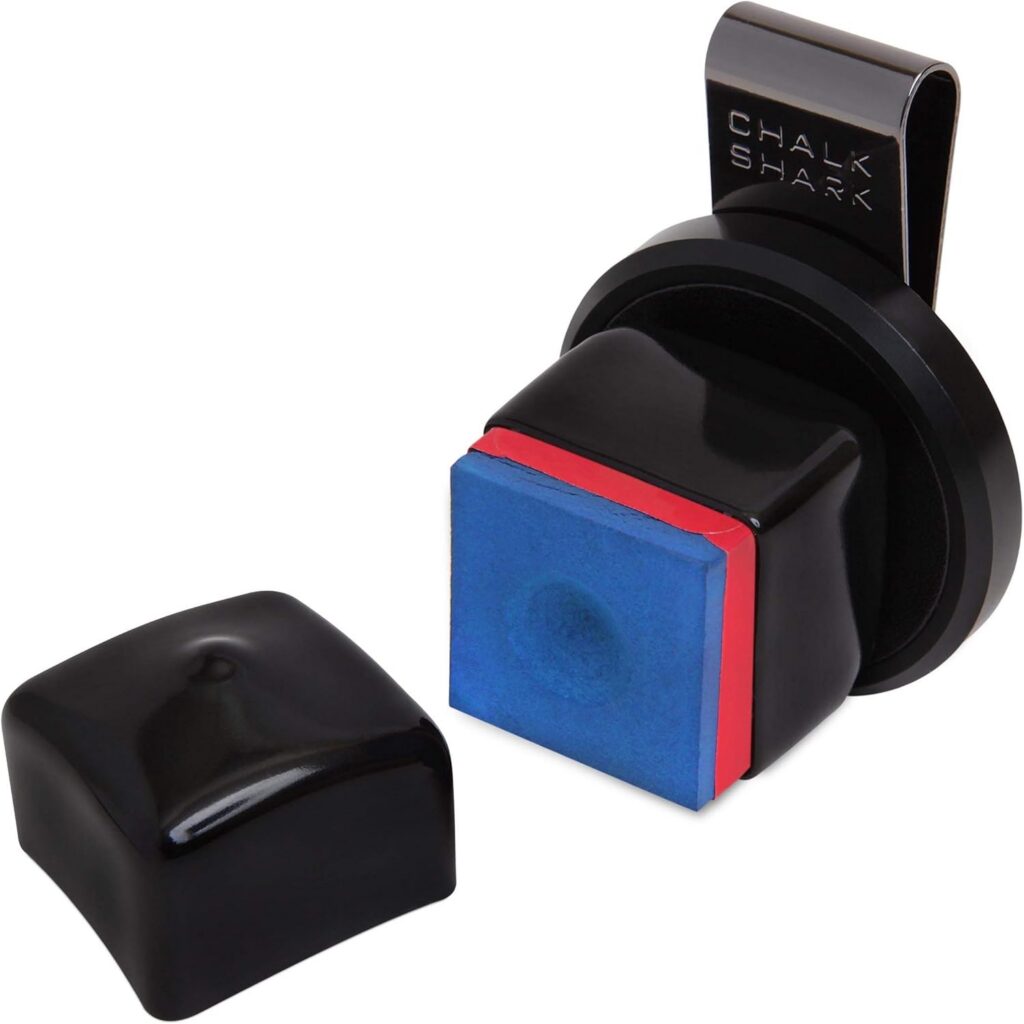
KAMUI Magnetic Chalk Holder on Amazon – Magnetic holder keeps chalk accessible.
Pro Tip: Buy two cubes. Keep one in case for play. Keep backup in sealed bag at home. When first cube gets too small to use comfortably, start the second one.
The Blind Test Results
Remember those five league players I had test unmarked chalk?
Their preferences matched my data almost perfectly:
Favorite: Kamui (4 out of 5 players) Second: Predator (3 out of 5 considered it equal to Kamui) Third: Masters (all 5 ranked it above mid-tier options)
Least Favorite: Generic blue (unanimous)
Nobody could explain exactly why they preferred premium chalk. They just “felt more confident” using it.
That confidence shows in performance. Fewer miscues. More aggressive English. Better position play.
When Cheap Chalk Actually Makes Sense
I’m not saying everyone needs $6 chalk.
Use Budget Options When:
- You’re teaching absolute beginners (they’ll lose it anyway)
- Playing on a bar table with house cues
- Practicing basic straight shots that don’t require English
- You play once monthly or less
Upgrade To Premium When:
- Playing in leagues or tournaments
- Money is on the table
- Working on advanced techniques
- You miscue more than once per session
My Current Setup
I carry two types of chalk:
In My Case: Kamui 0.98
For league play, tournaments, serious practice sessions. When miscuing costs games.
In My Car: Masters Blue
Backup chalk. For casual games when I forget my case. For letting friends borrow when they need chalk.
Total investment: Maybe $10 every four months. Prevents problems worth hundreds in lost games.
What To Actually Buy
If you’re serious about pool: Get Kamui 0.98. Yes, it’s expensive. Yes, it’s worth it.
If you want great value: Buy Masters Blue (12-pack). Significant upgrade from house chalk at reasonable cost.
If you play casually: Silver Cup 12-Pack or Tweeten. Both fine. Neither amazing. Both prevent embarrassing miscues on easy shots.
If you’re on extreme budget: Save your money on something else. Steal house chalk. I won’t judge.
The Real Question
Is chalk important enough to care about?
Put it this way: I spent $800 on cue testing for last year’s articles. But chalk testing changed my game more than any cue upgrade.
Why? Because miscuing on the 8-ball doesn’t care if you’re using a $1,000 cue.
Ball still goes the wrong direction. Game still ends. Trophy still goes to someone else.
Good chalk doesn’t make you better at pool. But bad chalk definitely makes you worse.
Bottom Line
You’re already spending hundreds on cues, cases, league fees, table time.
Spending an extra $3-4 on chalk that actually works isn’t the place to save money.
Buy Kamui if you hate miscuing. Buy Masters if you want value. Buy anything except generic blue.
Your win percentage will thank you.
—
Amazon prices and availability accurate as of October 2, 2025. Prices may change. As an Amazon Associate, we earn from qualifying purchases.
